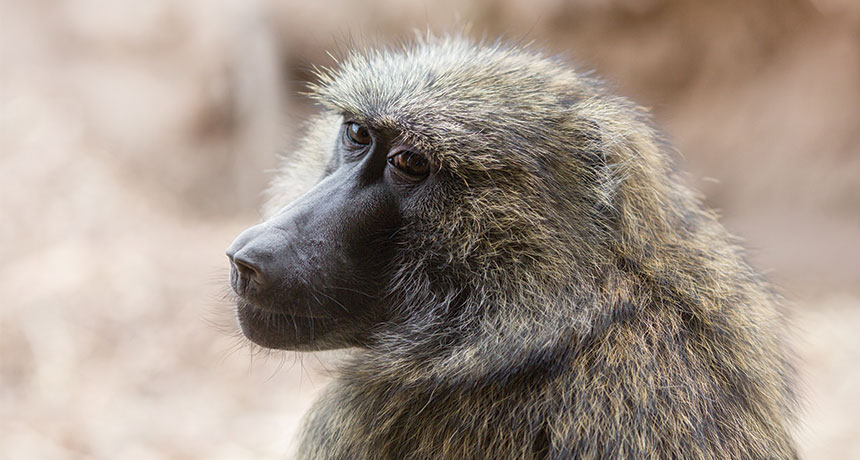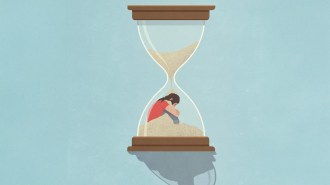Quantity counts for baboons
Peanut experiment shows that monkeys roughly compare numbers of nuts using logic similar to humans

COUNTER INTELLIGENCE An olive baboon named Pearl, shown here, and one of her troopmates could keep tabs on approximate quantities of peanuts placed one at a time in containers. Researchers say this counting-like logic, which humans use to count exact amounts, comes naturally to monkeys.
Adam Fenster/University of Rochester Photography







